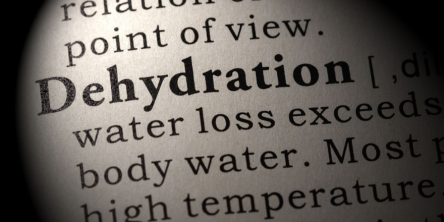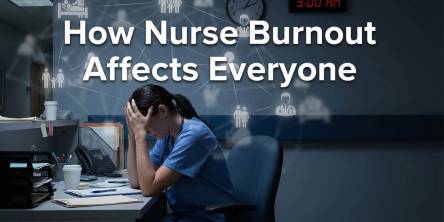A Guide to Sleep Apnea Diagnosis and Treatment
Like, we as individuals are dissimilar, our sleep is also different. Hence, if you have any sleep disorder, it might present itself differently. For diagnosing your sleep problem, your sleep disorder doctor will measure various aspects of your body while you are asleep. A primary care physician, neurologists, pulmonologists and obviously a sleep physician might be involved in making a definitive diagnosis for your sleep disorder.
One of the most common sleep disorders that require immediate diagnosis and treatment is sleep apnea. Several Sleep Apnea tests are performed to evaluate a person for Sleep Apnea.
What Sleep Apnea Tests are performed?
Polysomnography- This sleep apnea test records multiple physiologic signals during sleep. These recordings, done by an expert sleep disorder doctor or sleep physician will include tracking of brain waves, heart rate, eye movements, chin muscle activities, airflow, abdominal and chest movements, legs movements, and blood oxygen levels. Such signals help in determining whether his/her pattern of sleep is normal.
This sleep apnea test is usually performed in a sleep laboratory under the supervision of a sleep physician. It is considered a “gold standard” for sleep apnea diagnosis. In people with OSA, the recordings done with polysomnography determine repetitive episodes of breathing pauses.
Multiple Sleep Latency Test- People without any sleep disorders usually take 10 to 20 minutes to sleep, whereas those with some kind of sleep disorder fall asleep in less than 5 minutes. MSLT measures the speed of falling asleep to further the treatment of sleep disorders.
Sleep Apnea tests are usually performed in an accredited sleep center, however latest technologies may allow you to have sleep tests done at home. Ask your sleep physician to determine what can best be done for your problem.
Other Diagnostic Tests
In addition to polysomnography or latency test, there are other sleep apnea tests that can be done at home. However, as these tests are done by themselves, they are inadequate to confirm a diagnosis. These are:
Oximetry- This method records the blood oxygen levels only. However, this could not be a substitute for sleep apnea tests like polysomnography done by a professional sleep disorder doctor because blood oxygen levels can be caused by other disorders than sleep apnea. In addition, people with OSA may have a little reduction in blood oxygen levels also.
Sleep Questionnaires and Diaries- Filling up a general questionnaire available over the internet easily or keeping diaries for the record might help in understanding your sleep habits and patterns. However, this in itself is insufficient to confirm or exclude a diagnosis of OSA with Sleep apnea test.
How to treat Sleep Apnea?
People are warned for the risks of driving, operating heavy machinery or engaging in activities that would be hazardous if the patient falls asleep in between.
You can easily cope with sleep apnea by adopting the following Sleep Apnea Treatments.
Self Help
Some of the simplest and recommended Sleep apnea treatments especially for mild Sleep apnea are few lifestyle changes. These are:
Maintain Proper Weight as the excessive weight around abdomen or neck hampers breathing and compress airways.
Eliminate tobacco, alcohol, and sedatives
Sleep on your side rather than on your back to keep your throat open and limit the effects of sleep apnea.
Other Non-surgical Sleep Apnea Treatment
Heavy snorers and people who choke more often in their sleep, besides adopting the above-mentioned lifestyle changes should consider the benefits of continuous positive airway pressure (CPAP). This sleep apnea treatment device is generally used in the supervision of Sleep disorder doctor. It works by allowing the patient to breath through a nose mask that works by providing higher pressure in the airway. As the patient takes a breath, the increased pressure opens the throat. An expert Sleep physician or health care practitioner is required during the first two weeks to ensure proper mask is fitted.
Similar Articles
Explore the biggest health trends that shaped 2025, from personalized nutrition to matcha and recovery—plus what wellness trends are coming in 2026.
Winter is a season when the body needs extra nourishment, warmth, and immunity support. According to Ayurveda and modern nutrition science, dry fruits play a vital role in maintaining health during cold weather.
Most people think health problems start suddenly. One day you feel fine, the next day something is wrong. In reality, most health issues develop slowly .They grow quietly in the background while life keeps moving.
The start of a new year is a natural time to pause, reflect, and think about how you want to feel in the months ahead. For those over 60, a fresh start does not mean setting unrealistic resolutions or making drastic changes.
Picture this: You're parked at your workspace, battling to focus on what should be a straightforward five-minute task. That afternoon slump? It's demolishing you today.
Joint pain and arthritis are common health issues that tend to become more intense during the winter season
Discover the benefits, challenges, and future of locum medical jobs. Learn how locum recruitment agencies support flexible, diverse career opportunities for healthcare professionals seeking dynamic work environments.
Burnout in the healthcare environment is a significant and growing crisis.
NAD+ therapy restores cellular energy, enhances metabolism, and promotes anti-aging by supporting DNA repair and improved overall vitality.









